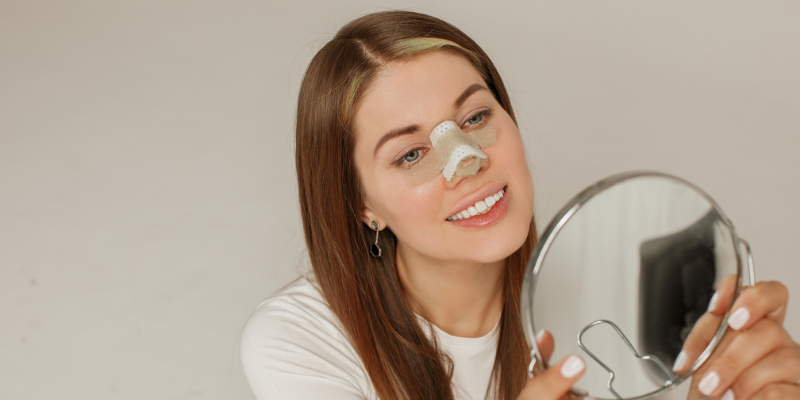What Not To Do After Rhinoplasty?
What not to do after rhinoplasty? People who have nose surgery often want to know what to do and what not to do while they are healing. Here is a list of what to do and what not to do after rhinoplasty. You can drink clear liquids and eat very soft foods on the day of surgery and for 4 hours after surgery.
On the day of your surgery, rest at home (or in a hotel). Use two or more pillows to keep your head up. You can walk again the day after your surgery. Once you’re fully awake, start taking the medicines your doctor gave you and stick to the schedule he or she gave you (although most patients do not need any medications at all). The doctor might give you 500 mg of acetaminophen to take every 4 to 6 hours to help with the pain after surgery. Do not drink alcohol during this time because it can make some medicines, like acetaminophen, less effective and can hurt your kidneys.
On the day after your surgery, take off the bandage under your nose if there is one. Wash the inside of your nose at least five times a day with the washing solution and syringe that were given to you. Apply ointment three times a day to the places where the stitches were. Watery drainage is normal for the first 48 hours after surgery. Don’t worry, though, because the packing in your nose can be changed.
What Not To Do After Rhinoplasty To Protect Nose?
Use a cold pack on the nose and eyes for the first 48 hours after surgery. Then, for the next 48 hours, use a warm compress (do not press the compress too hard on the nose). Some people might experience vomiting or, with a less probability, bloody vomiting. Not to worry; contact your doctor. Start taking a 30-minute walk every day on the third day after surgery.
Some people might start sneezing after the surgery. Sneeze with your mouth open so that your nose doesn’t get hurt. Go to your doctor between days 5 and 7 after surgery to have the nasal cast, splint, and sutures taken off. Take a bath before you go to the clinic, but don’t try to take off the cast on your own. But if the cast falls off by accident, don’t worry and go to the clinic right away.
If there is a tampon in your nose, your doctor will tell you when it will be taken out. Take juice and chocolate with you to the clinic when you go to get stitches taken out. When you take off the bandage, the skin on your nose, eyes, and upper lip might be a different color. Nothing to worry about, as this usually goes away after about two to three weeks.
Rhinoplasty Aftercare Tips
You can’t drive for a week or two after surgery. You should stop smoking about two to three weeks before and after surgery because nicotine slows healing and raises the risk of problems.
After nose surgery, people often have swelling and bruises. The swelling will go down a little bit each day during the first month, but it will take a few more months to go away completely. The best way to get rid of swelling is for time to pass. After surgery, bruises will go away in about two to three weeks. Another common side effect of rhinoplasty is swelling and bruises under the eyes, which usually go away in the first two to three weeks after surgery. So don’t be afraid. Don’t take aspirin or Ibuprofen for two weeks before and after surgery.
Can You Do Workout After Rhinoplasty?
Don’t work out for a month. After a month, you can do light exercises. You can swim and work out on a treadmill (diving is forbidden). For the next 6 months, don’t play ball or contact sports. Wear clothes that feel good. Do not wear clothes that need to be pulled over your head for two weeks after surgery.
You can wash your hair like you would at a salon even if you have a splint in your nose for the first week after surgery. Just make sure the splint doesn’t get wet. You shouldn’t wash your own hair. Try not to wash your face for the first week because the splint could get wet. A wet splint can cause a rash and infection on the skin. If it gets wet, use a hair dryer to dry it. It’s okay to wash your body. Don’t wear eyeglasses (including prescription glasses and sunglasses) for 3 months after surgery. The nose pads can put pressure on the nose and stop the nasal bones from healing. If you have to wear them, tape them to your forehead so they don’t press on your nose bones. After two to three days, you can wear contact lenses again.
Don’t do anything sexual for 10 days after surgery. Also, during the first two weeks, you shouldn’t do anything that gives you a rush of adrenaline, like masturbation, because it can make your nose swell up and even bleed.


